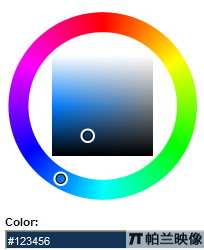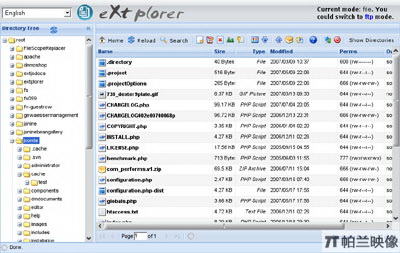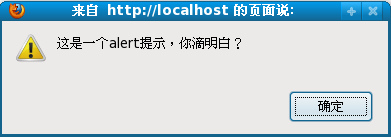|
|
2.變化的this
在JavaScript中,this通常指向的是我們正在執行的函數本身,或者是指向該函數所屬的對象(運行時)。當我們在頁面中定義了函數 doSomething()的時候,它的owner是頁面,或者是JavaScript中的window對象(或 global對象)。對于一個onclick屬性,它為它所屬的HTML元素所擁有,this應該指向該HTML元素。
2.1在幾種常見場景中this的變化
函數示例
function doSomething ()
{
alert(this.navigator); //appCodeName
this.value = "I am from the Object constructor";
this.style.backgroundColor = "# 000000";
}
1. (A)作為普通函數直接調用時,this指向window對象.
2. (B)作為控件事件觸發時
1) inline event registration 內聯事件注冊 .將事件直接寫在HTML代碼中(<element
onclick=”doSomething()”>), 此時this指向 window對象 。
2) Traditional event registration 傳統事件注冊 (DHTML方式).
形如 element.onclick = doSomething; 此時this指向 element對象
3) <element onclick=”doSomething(this)”>作為參數傳遞可以指向element
3. (C)作為對象使用時this指向當前對象。形如:new doSomething();
4. (D)使用apply 或者call方法時,this指向所傳遞的對象。
形如:var obj={}; doSomething.apply(obj,new Array(”nothing”); //thisàobj
下面我來闡述如何在事件處理中來使用this,之后我會附加一些this相關的例子。
Owner
接下來文章中我們將要討論的問題是:在函數doSomething()中this所指的是什么?
Javascript代碼
function doSomething() {
this.style.color = '#cc0000';
}
function doSomething() {
this.style.color = '#cc0000';
}
在JavaScript中,this通常指向的是我們正在執行的函數本身(譯者注:用owner代表this所指向的內容),或者是,指向該函數所屬的對象。當我們在頁面中定義了函數doSomething()的時候,它的owner是頁面,或者是JavaScript中的window對象(或 global對象)。對于一個onclick屬性,它為它所屬的HTML元素所擁有,this應該指向該HTML元素。
這種“所有權”就是JavaScript中面向對象的一種方式。在Objects as associative arrays中可以查看一些更多的信息。

如果我們在沒有任何更多準備情況下執行doSomething(),this關鍵字會指向window,并且該函數試圖改變window的 style.color。因為window并沒有style對象,這個函數將非常不幸的運行失敗,并產生JavaScript錯誤。
Copying
因此如果我們想充分利用this,我們不得不注意使用this的函數應該被正確的HTML元素所擁有。換句話說,我們應該復制這個函數到我們的onclick屬性。Traditional event registration會關心它。
Javascript代碼
element.onclick = doSomething;
element.onclick = doSomething;
這個函數被完整復制到onclick屬性(現在成為了函數)。因此如果這個event handler被執行,this將指向HTML元素,并且該元素的顏色得以改變。

這種方法使得我們能夠復制這個函數到多個event handler。每次this都將指向正確的HTML元素:

這樣你就可以最大限度使用this。每當執行該函數,this所指向的HTML元素都正確響應事件,這些HTML元素擁有doSomething()的一個拷貝。
Referring
然而,如果你使用inline event registration(內聯事件注冊)
Javascript代碼
<element onclick="doSomething()">
<element onclick="doSomething()">
你將不能拷貝該函數!反而這種差異是非常關鍵的。onclick屬性并不包含實際的函數,僅僅是一個函數調用。
Javascript代碼
doSomething();
doSomething();
因此,它將聲明“轉到doSomething()并且執行它”。當我們到達doSomething(),this關鍵字又重新指向了全局的window對象,函數返回錯誤信息。

The difference
如果你想使用this來指向HTML元素響應的事件,你必須確保this關鍵字被寫在onclick屬性里。只有在這種情況下它才指向event handler所注冊的HTML元素。
Javascript代碼
element.onclick = doSomething;
alert(element.onclick)
element.onclick = doSomething;
alert(element.onclick)
你將得到
Javascript代碼
function doSomething() {
this.style.color = '#cc0000';
}
function doSomething() {
this.style.color = '#cc0000';
}
正如你所見,this關鍵字被展現在onclick函數中,因此它指向HTML元素。
但是如果執行
Javascript代碼
<element onclick="doSomething()">
alert(element.onclick)
<element onclick="doSomething()">
alert(element.onclick)
你將得到
Javascript代碼
function onclick() {
doSomething()
}
function onclick() {
doSomething()
}
這僅僅是到doSomething()函數的一個引用。this關鍵字并沒有出現在onclick函數中,因此它不指向HTML元素。
例子--拷貝
下面的例子中,this被寫入onclick函數里:
Javascript代碼
element.onclick = doSomething
element.addEventListener('click', doSomething, false)
element.onclick = function() {this.style.color = '#cc0000';}
<element onclick="this.sytle.color = '#cc0000';">
element.onclick = doSomething
element.addEventListener('click', doSomething, false)
element.onclick = function() {this.style.color = '#cc0000';}
<element onclick="this.sytle.color = '#cc0000';">
例子--引用
下述情況中,this指向window:
Javascript代碼
element.onclick = function() {doSomething()}
element.attachEvent('onclick', doSomething)
<element onclick="doSomething()">
element.onclick = function() {doSomething()}
element.attachEvent('onclick', doSomething)
<element onclick="doSomething()">
注意attachEvent()的出現。Microsoft event registration model最主要的弊端是attachEvent()創建了一個指向函數的引用,而不是復制它。因此有時不可能知道哪個HTML正在處理該事件。
組合使用
當使用內聯事件注冊時,你可以將this發送到函數以至于可以正常使用:
Javascript代碼
<element onclick="doSomething(this)">
function doSomething(obj) {
//this出現在event handler中并被發送到函數
//obj指向HTML元素,因此可以這樣:
obj.style.color = '#cc0000';
}
JavaScript技術:javascript this用法小結,轉載需保留來源!
鄭重聲明:本文版權歸原作者所有,轉載文章僅為傳播更多信息之目的,如作者信息標記有誤,請第一時間聯系我們修改或刪除,多謝。



